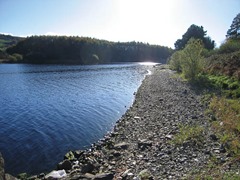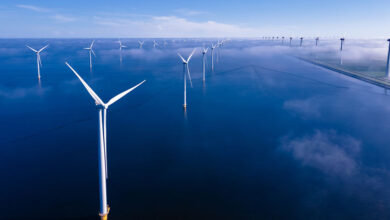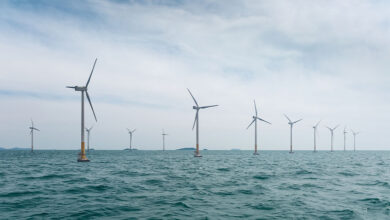Semi-states vie to solve water supply challenge
 Richard Halleron considers the roll-out of Irish Water’s metering programme and Bord na Móna’s plans for a Midlands reservoir to secure greater Dublin’s water supply.
Richard Halleron considers the roll-out of Irish Water’s metering programme and Bord na Móna’s plans for a Midlands reservoir to secure greater Dublin’s water supply.
It’s amazing how two or three weeks’ decent weather sends everyone rushing for their dictionaries to get the proper spelling of the word ‘drought’. Given the frenzied media attention to the ‘lack’ of precipitation that has been falling from the skies this summer, visitors to this part of the world might think that it never rains in Ireland! But, irrespective of the weather, the challenge of supplying water to consumers and businesses throughout the country – and how it is paid for – will remain an ongoing priority for the Government.
Significantly, Irish Water has announced the creation of 1,600 jobs as part of its nation-wide water metering programme. The jobs, for which recruitment has already begun, will be available across the country.
The organisation has also detailed its water meter rollout programme which started at the beginning of August and continues to the end of 2016. Over 1 million water meters will be installed outside domestic residences on the public water mains. In the first three months, water meters will be installed in Kildare, moving swiftly to Kerry, Meath, Wexford, Dublin City, Limerick, Mayo and Fingal. An average of 27,000 water meters will be installed each month, making it the most ambitious metering programme by international standards.
John Tierney, Managing Director of Irish Water, said that the creation of 1,600 jobs across the country is another milestone announcement for Irish Water.
“We are committed to allocating 25 per cent of roles involved in installations to small businesses, people on the live register, graduates and school leavers,” he added.
“I’m delighted to also confirm that we have made real progress with the establishment of Irish Water. Legislation has now been passed to incorporate Irish Water as an official subsidiary of Bord Gáis Éireann. Our headquarters will be located in Dublin city centre, with eight regional offices located throughout the country. Recruitment of senior management roles within Irish Water is ongoing.
“We are now also ready to start one of the most ambitious metering programmes ever undertaken. Creating a national water utility is one of the biggest tasks ever carried out in the semi-state sector. Our primary focus is to deliver enhanced water services in partnership with the local authorities, communities and businesses. We will develop an efficient and effective organisation that becomes a centre of excellence for water services [and] delivers economies of scale and reduced operating costs over the long term,” he continued.
There are no upfront costs for meters and water charges are due to be introduced in Quarter 4 of 2014, with first bills issuing from January 2015.
In April 2012, the Government announced that it would create a publicly owned national water utility to manage and improve the delivery of water and wastewater services in Ireland. Irish Water would replace the current system in which public water and wastewater services are delivered by 34 city and county councils.
Analysts believe that establishing the new organisation under the umbrella of a mature semi-state, Bord Gáis Éireann (BGE), which is already a regulated utility operating in the Irish corporate environment, has a number of advantages including the existing expertise and experience to manage the set up with lesser risks than a green-field set-up.
BGE also has key capabilities that can be brought to bear in the set-up of Irish Water:
• a track record in raising finance;
• experience in operating as a utility in a regulated environment; and
• specific skills from its own experience of transformation.
Customer relations, network management and metering and utility operation systems can also be quickly deployed to assist in the successful establishment and operation of Irish Water.
John Tierney was appointed Managing Director of Irish Water in January of this year. He is a former City Manager with Dublin City Council.
New reservoir
Meanwhile, one cannot but applaud Bord na Móna for picking what can only be described as the best day of the year on which to release details of its Portarlington ‘reservoir’ initiative. With temperatures heading for the record books and outdoor swimming fast becoming the new national pastime the board conveniently let it be known that at least part of the solution to Dublin’s future water supply requirements lay in its hands.
In essence, the €540 million project to create a new water reservoir will take water at peak flow from the River Shannon to provide drinking water for Dublin and the surrounding areas.
Under the plan, water would be stored in Garryhinch cutaway bog near Portarlington, County Laois, in a reservoir which will cover over 700 acres. Bord na Móna, which owns the bog, will build the reservoir where the water will be treated before being transported by pipe to the capital and the surrounding region. If it gets planning approval, the project could create up to 1,000 jobs during the construction phase.
It will also create a natural amenity that could be used for water sports, fishing, sailing, walking and bird watching. When it is up and running, there may be over 100 employees involved in the running of the water park, and the operation and maintenance of the water park and treatment plant. It is also a resource and facility that will last well into the future.
Bord na Móna has already created a smaller wetland area at the Lough Boora Parklands, near Tullamore, County Offaly, which attracts 30,000 visitors a year. This project has the potential to create a new sustainable business for the board in water and leisure and is consistent with its ‘New Contract with Nature’ vision in terms of the after-use and rehabilitation of peatlands.
Bord na Móna Chief Executive Gabriel D’Arcy said the reservoir would be developed to store a three-month supply of rain water, in order to meet domestic demand in an area encompassing Dublin, Kildare, Offaly and Westmeath.





